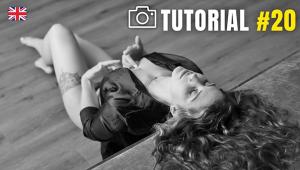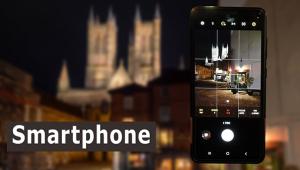Canon EOS 7D Mark II DSLR Review

[Editor's Note: Lab test and comments are by Betternet, Shutterbug’s TIPA-affiliated testing lab. TIPA (www.tipa.com) is a worldwide association of photo and imaging magazine editors. Shutterbug is the sole US member of the association, and Editor at Large George Schaub serves as a member of the Technical Committee. Please click on the Image Tech tab on the home page for more camera review tests.]
The Canon EOS 7D Mark II ($1,799, body only) follows the legacy 7D, which was debuted way back in 2009. Rather than being a simple update of the 7D, the 7D Mark II is a newly designed system based on an APS-C sized sensor. It offers a slightly higher sensor resolution of 20MP (7D: 18MP), but uses a completely new sensor design.
Perhaps the most important difference between the two 7D versions concerns the AF system. The 7D Mark II offers a new AF system with 65 AF sensors, all of which are “cross type” sensors. Compared to previous Canon midrange DSLRs, the AF sensors of the Mark II cover a very large area of the image and allow for very precise focus control. Using the AF-sensor configuration button on the back (which will be very familiar to all Canon DSLR users), photographers can choose numerous AF configurations with the “M-Fn” button on the top and the setup-dial (joystick) on the back of the camera. For example, users can define groups of 9 or 21 AF areas; move theses areas within the frame; select a single AF sensor for very discrete focusing; and even define AF for use in portrait or landscape shooting orientation.
While it has a large body, a big grip on the right hand side makes handling very comfortable. Numerous function buttons on the back (left of the LCD screen) and on the top help users change parameters very quickly and intuitively. In addition, the combination of the very large setup dial on the back, the second dial near the shutter release button and the joystick on the back add to the feeling of very good photographer control.




A large status LCD on the top shows all necessary image parameters like aperture, shutter speed, ISO settings and more. The status LCD can be illuminated by pressing the furthest right of the four function buttons directly in front of the screen.
The Canon 7D Mark II still has a 3-inch sized LCD screen on the back, but the resolution has been raised to 1,040,000 RGB dots (7D: 920,000 RGB dots). The monitor is fixed, which is a bit of a drawback especially when shooting video. To switch from optical to the live view LCD finder, the photographer has to use a function button near the eyepiece of the optical finder. This viewfinder function button is also used to start video recording.
A large dial on the top (left of the viewfinder) offers standard exposure modes like P, S and A and manual. The mode dial can also be used to set up three customer defined parameter setups (C1 to C3). Directly beneath the mode dial there’s the On/Off switch, which is a little unusual, but nevertheless is a comfortable way to activate the camera.
The camera is extremely fast. It can deliver 10 frames per second with AF for every shot. It can shoot an infinite number of pictures in JPEG mode, or up to 31 Raw images. During the test we used very fast SDXC cards and shot in continuous Raw and got up to 45 frames. The very high speed is also a result of a new processor. The 7D Mark II is equipped with the “Dual DIGIC 6” processor, while the 7D used a “Digic 4” system. Combined with very high shutter speed settings of 1/8000 sec, the camera seems ideally suited for sports, action and even wildlife photography.
Comments on Image Quality
Color: The automatic white balance system of the Canon 7D Mark II showed a very good performance in our tests. It enables the camera to create neutral colors in all lighting conditions, even under fluorescent light. The gray backgrounds in the standard test images have a very neutral look, albeit with a slight tendency into cooler color areas. Skin tones are reproduced very precisely. The mean color error level is very low. The camera showed only a minor boost of blue color: compared to some other cameras, this effect is really insignificant.

Sharpness: The Canon showed a good performance in our resolution tests. The test chart was reproduced with 3188 of 3648 lines per picture height, with some clipping warnings in hard contrast lines. Pictures of “real life” scenes look smoother. Fine details, like the structure of the model's hair, are reproduced without aliasing or Moiré effects. The differentiation of colors is good, but the differentiation of red colors in our standard test box shot is less detailed than in images taken with other Canon or Nikon DSLRs. The saturation is on very good level (107.3 percent).

Noise: The performance of the Canon 7D Mark II in our noise tests is very good. The luminance noise factor is kept on a very low level, between 0.41 and 1.0 (ISO 16000). The color noise level is also on a low level, but color noise artifacts are noticeable in images taken with ISO 1600 and higher. At ISO 6400 to 16,000, the anti-noise filtering reduces image details by smoothing contrast lines a bit. Nevertheless, the filtering effects are still acceptable and inconspicuous.
The dynamic range results are very good. The camera gained a maximum of 11.8 f-stops at ISO 100. Between ISO 200 and 3200 it keeps a high level of 10 to 11 f-stops; only at higher ISO settings does the dynamic range drop radically (to 7.91 f-stops at ISO 16,000.

Video Format and Handling
The 7D Mark II is able to record full HD video with 1920 x 1080 pixels. In contrast to the 7D, it is able to record higher frame rates at 50 or 60 frames per second. In addition, it offers all standard video modes like 50i or 25p as well as two 24p modes with 24 and 23.97 frames per second. The camera records video in standard Apple QuickTime MOV format with H.264 format. There are also interframe modes with up to 60p and MP4 recording with intraframe recording for higher image quality in 24-30 frames per second mode. Note: in the EU (European Union) version the camera is restricted to a maximum scene length of 29 minutes, 59 seconds.
The camera offers a “Live View” button on the back to choose the optical or electronic viewfinder in photo mode. This switch is also used to toggle between photo and video mode and also is used to start video recording.
The camera offers all exposure programs in video mode, so it can record in P, S, A and M mode. It has special picture styles for video recording and allows the user to change ISO speed manually. The ISO speed maximum isn't restricted and videos can even been taken at ISO 16,000. The only restriction is in using “high ISO modes,” which are available in photo mode.
The “Dual CMOS AF” system allows for very fast AF setup in video mode. In combination with STM lenses, the 7D Mark II is able to focus continuously and smoothly.
The sound level can be controlled manually. The camera offers a microphone interface for enhancing the sound quality and has an earphone jack for direct sound control.

Comments on Video Quality
The 7D Mark II showed a disappointing result in our video resolution tests. The ISO 12233 chart was reproduced with only 613 of 1080 lines per picture height. The video images have a soft look: depending on the scene and subject, the videos even have a slightly blurred look (even with correct focus settings).
The color reproduction is very good. The 7D Mark II reproduced the test chart with very natural looking colors and a nearly perfect white balance. In our opinion it’s too bad that the camera doesn't offer “sharper” images because the color in the videos colors is really excellent.
The dynamic range results are on an average level. The camera achieved a maximum of 10.1 f-stops; in most test images taken at ISO 100 to ISO 3200 the dynamic range level is around 9-10 f-stops. The noise results correlate to the results in photo mode.
Pro
+ very good image quality
+ extremely fast AF system
+ large body, but comfortable handling
+ built-in GPS system
+ video recording function is highly configurable
+ USB 3.0 for fast data transfer
Con
- Disappointing result in the video resolution tests
- monitor is fixed
- missing Wi-Fi function (available with optional WLAN adapters like the Canon WFT-E7 (2nd version)
Lab tests and comments by Betternet, Shutterbug’s TIPA affiliated testing lab. Shutterbug is the sole US representative within TIPA, a worldwide association of photo and imaging magazines. Edited by George Schaub, a member of TIPA’s Technical Committee.
- Log in or register to post comments

















































